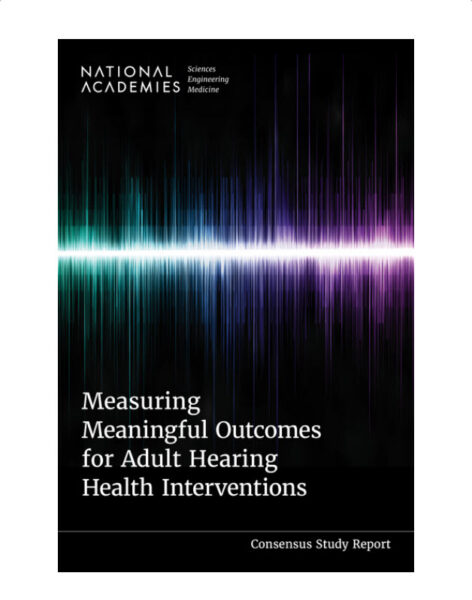As people get older, they become more likely to have hearing difficulties in certain situations; for example, having conversations in public settings where there is naturally more noise. This can sometimes lead to isolation, depression, or even fatigue from the effort needed to communicate with others. Clinicians and researchers often do not use standardized outcome measures for hearing interventions that reflect patients’ perceptions of real-life improvements.
Ultimately, two outcomes were identified for inclusion in the core outcome set:
- Understanding speech in complex listening situations (such as an understanding of what a person is saying in a noisy restaurant) and
- Hearing-related psychosocial health (such as the frustration some people can feel when they are not able to communicate easily with others)
[CHA editor note: During the initial webinar panel with patients, all patients spontaneously mentioned the importance and lifeline of assistive listening devices and assistive listening systems. Yet the report scoped them out. In some ways, that makes sense to give boundaries to the work. And yet, it would be extremely beneficial to have a foothold for future peer-reviewed research. Living with hearing loss is about our individual devices AND having audiologists fit and educate us about how these devices can be extended in social and work settings.]
Summary (4 pages)
Longer description
An ad hoc committee of the National Academies of Sciences, Engineering, and Medicine examined the state of the science in outcomes research for interventions in adult hearing health care (excluding surgically placed prosthetic devices), with an emphasis on measures that are meaningful to the individual and the clinician. The committee determined a core set of existing standard outcome measures, defined the core outcome domains (including hearing, communication, and other domains) that should be measured, and developed strategies and a set of recommendations to guide the development of standardized and meaningful measures that are fit for use in different settings.
Specifically, the committee’s responsibilities were to:
- Identify and engage appropriate partners, including relevant federal agencies, the academic/professional community of researchers and clinicians, professional organizations, industry, and patient/consumer groups, to gain their perspectives as input to committee deliberations.
- Provide a brief contextual background describing the contribution of hearing to overall health and well-being, the etiology of hearing loss, the personal and societal costs of untreated hearing loss, the benefits of treatment for hearing loss, and disparities in treatment.
- Broadly describe the various interventions (e.g., hearing aids, rehabilitative strategies or training, pharmaceutical or biological therapies, etc.).
- Describe the outcome measures currently available to assess hearing function and communication in adults, available measures in outcome domains beyond communication (e.g., social connectivity, activity limitations, participation restrictions, economic productivity) that should be measured, and gaps where development of new outcome measures is urgently needed.
- Identify in which settings the metrics are most applicable (e.g., establishing efficacy in clinical trials, assessing patient response in clinical care and by type of intervention, conducting hearing health monitoring, assessing patient satisfaction).
- Provide recommendations on the standardized use of existing outcome measures for hearing health, including hearing, communication, and other domains (“core set of measures”), and the necessary qualities and strategies for adoption of new meaningful measures that could be implemented in the short term as well as longer timeframes with an eye toward large-scale adoption and standardization (e.g., national databases and repositories).
In the circumstance where robust evidence is lacking or absent, the committee is encouraged to make recommendations based on sound scientific reasoning in the context of the current healthcare environment.

